
Layer poultry farming means for commercial egg production to raise egg-laying poultry birds. Layer chickens are such a special hen’s species that must be raised when they are one day old. They begin commercially laying eggs between the ages of 18-19 weeks. They continue to lay eggs till their age of 72-78 weeks. During their egg-laying time, they will produce about one kg of eggs by consuming about 2.25 kg of food. Note the different characteristics of cock and hen before breeding for the purpose of producing a hybrid egg sheet. There are different types of highly productive layer breeds of eggs available worldwide.
Layer Breeds:
Layer hens are of two types, depending on the nature and color of the egg. Below is a short description of these two types.
White Egg Laying Hens: The size of this type of hens is relatively smaller. Eat less food relatively, and the eggshell color is white. Some popular white egg-laying chickens are Isa White, Lehman White, Nikchik, Bab Cock BV-300, Havard White, Hi Sex White, Sever White, Hi White, Bovanch White, etc.
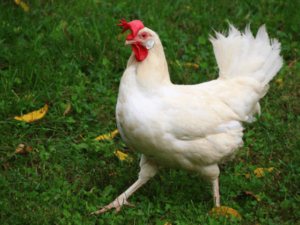
 Layer Hen Selection:
Layer Hen Selection:
Before selecting the layer hens for your poultry farming business, you need to keep in mind some essential information. You need to pick certain breeds that are suitable for your poultry farming business and are able to produce well in your field. For selecting the right breeds for your company, read below.
- For the development of commercial eggs, you must correctly select highly productive laying hens.
- Not all types of hens produce the same number of eggs.
- The selected breeds must be able to produce well.
- If your selected breed contains the desired characteristic and has an egg production reputation, this breed is suitable for your business.
- Only buy healthy chicks from a common and well-known hatchery. Once your order, you can see their catalog.
Maintaining Layer Poultry Farming Chicks:
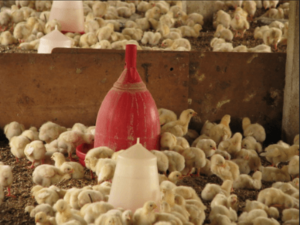
Vaccination and Layer Poultry Farming Importance:
Chicks must have a vaccine program to keep them safe from all kinds of diseases. The key advantage of vaccinating poultry is described below.
- Timely vaccination gives the chick’s body the power to resist disease.
- Help free the hen from infectious diseases of the poultry.
- Disease prevalence will be less.
- The mortality rate will reduce.
- And low mortality = more production = more income.
For layer hens, there are many types of poultry vaccines available.
Before Vaccination of Layer Poultry:
Before vaccination, you have to follow some laws.
- Keep very carefully the chickens.
- Without strain, vaccinate the chickens.
- The ill hen doesn’t need to be vaccinated.
- Wash with freshly boiled water or Viraclean vaccination equipment
- Do the cold-weather vaccination program.
- Healthy birds are always subject to preventive vaccines.
Keeping Growing Chicks:
To keep growing layer chickens, you have to keep the suggestion mentioned below.
- You have to give special care to rising chicks before they reach the age of 4-5 weeks.
- Serve them with good quality pellet feed after brooding. In the future, it will yield good results. They’re going to produce large eggs. The high-quality pellet will keep the chickens healthier and their body weight will increase.
- It is therefore very important during the growing period to provide them with quality pellet feed.
Egg Production for Layer Poultry Farming:
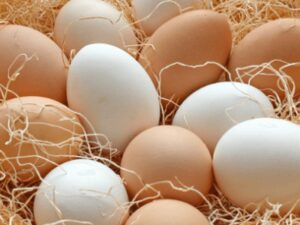
- Approximately 5 percent of hens start laying eggs after the first 20 weeks of age.
- Approximately 10 percent of birds lies at 21 weeks of age.
- They develop strongly when they reach the age of 26 to 30 weeks. However, depending on their strain, it can be different.
- Normally they stop laying for a few days after laying a maximum number of eggs.
- And their production of eggs can slowly decrease after this time.
- Egg-laying rate and egg size are gradually increasing.
- The hens grow up to the age of 40 weeks.
- Eggs raise in weight and size until they are 50 weeks of age.
Lip cutting method and significance:
It is very important to cut the lip of laying hens. The key benefits are shown below.
- Lip cutting helps to reduce battles between people.
- This helps to avoid the waste of food.
- At their age of 8 to 10 days, you have to cut the tip of your chick.
- Cut the chicken rising lip at their age of 8 to 12 weeks.
- Cut the chicks ‘ lip 0.2 cm from the nose.
- Cut 0.45 cm if the chickens expand.
- Cut both the top and bottom of the mouth.
- Don’t merge the two faces. Cut one at a time.
- Use the chick block trimmer to remove the lips.
Do not cut your lip two days after or before vaccination, after or before using sulfur-like medicines. Do not cut the lip when the hen is in a struggle and when the environment is adverse and when the hen begins to lay eggs.
Three days before cutting the lips, serve the chicken water mixed with vitamin “K.” Wash the Viraclean lip cutting tool. Check the blade’s edge and temperature. You must be careful and not damage your eyes and your tongue. To cut their lips, choose cold weather. A professional technician will follow the method of lip cutting. Serve them with water in a deep pot after cutting the lips. Provide them with some enriched feed with extra energy.
Feeding for Layer Poultry Farming:
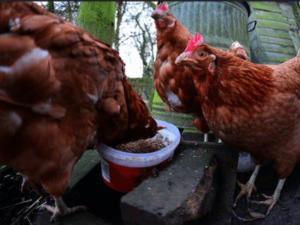
Protein, vitamins, and minerals are very important for laying hens that affect the quality of eggs, poultry layer fertility and the health of layer birds
- Provide 2% of calcium after conception for two weeks.
- If you find that they don’t gain planned weight, you’ll have to serve eight weeks of starter feed.
- Serve two or three times a day until they reach the age of 18 weeks.
- Feed demand increases very rapidly when the birds begin to nest.
- Serve them according to the age and weights of the poultry layer.
- During laying do not decrease the amount of feed.
Water Management for Layer Poultry Farming:
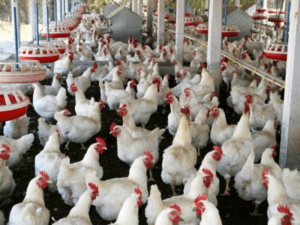
Food supply can monitor the weights of chicken according to the age and species of chickens. Use in your food enough calcium, phosphorus, vitamins, amino acid, and other minerals. If you follow the above-mentioned methods, your layer poultry farming business can make a better profit.
Layer Farming Sequence:
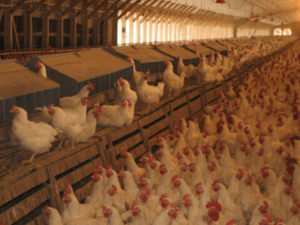
Layer Poultry Farming Brooding:(Day to 6 weeks):
When a hen sits still without eating or drinking normally for an extended period of time, she is said to be “broody.” This is a normal process where the hen starts producing eggs to incubate an egg-filled nest. The hen then looks after the chicks when the eggs hatch by keeping them warm and finding for them food and water. Modern chicken strains were chosen not too broody so that over a period of time more eggs are laid.
The aim of commercially rearing chicks is to do the same thing as the hen. The stage of life is called the brooding stage when chicks need some extra heat. Depending on the temperature of the area, it takes up to six weeks until the chicks can regulate their own body temperature. They usually receive chick starter feed from the day-old, which is designed to ensure that they have plenty of protein (19 percent) and body growth energy.
Layer Birds growing (6 to 20 weeks):
When chicks are able to control their body temperature, they need to be shielded from extreme weather conditions. They receive feed from pullet growers at this stage, which is less expensive and contains only 15% to 17% protein and 7% less energy than feed from the starter.
During the growing period, beak trimming and some vaccines are done to prepare the birds as laying hens for their adult life. Anything that currently restricts growth will affect their ability to lay well. Excessive feeding, however, can be harmful at this time, again leading to poor production.
Restriction of feeding supply to birds during development prevents them from growing rapidly, resulting in both feed savings and increased production of eggs when the birds mature. To limit body weight and work out how even the flock is growing, careful weekly weighing of the birds is essential. Breeding firms suggest the weight of birds at each age.
Moving the Layer Birds:
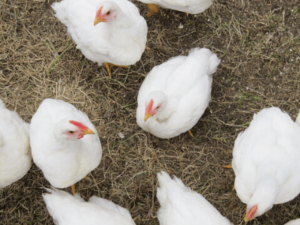
Adult layer birds (between 20 and/or 78 weeks):
Adult hens are the industry’s real staff. They need to be carefully fed and kept in a house at 21-28oC for the best performance. It means hen houses are built to stay as close to this year-round temperature as possible. The hens are regularly checked to monitor their health, and as appropriate, medicines can be provided. Tinted egg strains usually require feeding less than brown egg strains (120 g feed/hen/day) (105 g feed/hen/day).
The quality of the feed provided to hens may vary depending on the production level. Just before and during their peak production, Hens may need more nutrients than at other periods. This is called the feeding of the cycle. Adjusting rations for such high demand times can be cost-effective.
Egg Collecting and Grading:
In modern layer farms, the mechanical collection of eggs is common. The creation of each egg takes about 26 hours, and each hen lays an egg a little later every day. This is not an accurate thing, and in the morning most eggs are laid. Eggs should be regularly collected and transferred from the hen house to an egg room where they are graded or checked for weight and shells that are damaged. To check the internal quality, a sample of eggs is often broken open. For 12 eggs or trays of 30 eggs for sale, eggs are packed into cartons. Prices vary with the size of the egg, and eggs have to be divided by the weight of the egg. This is done automatically by an egg grader computer.
Marketing of Eggs:

Also, see: Best Guide To Poultry Farming

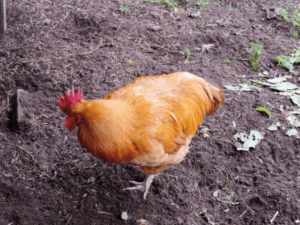 Layer Hen Selection:
Layer Hen Selection: